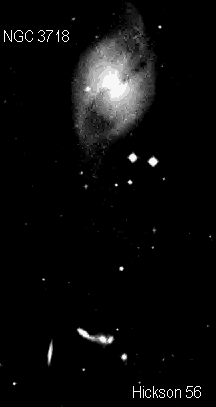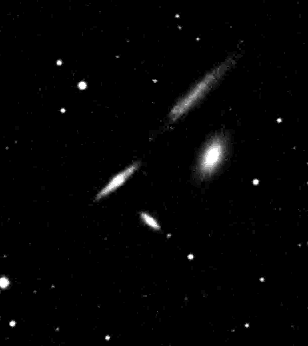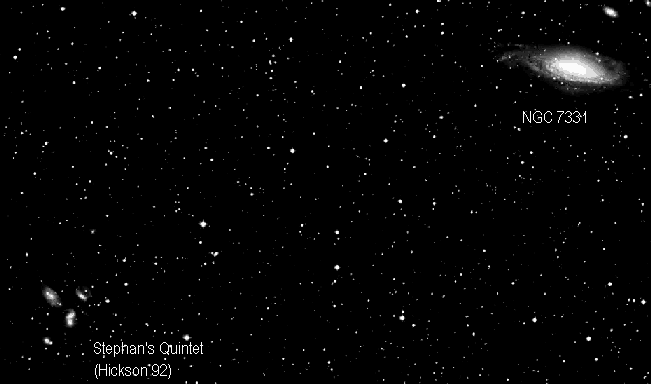
Observing Paul Hickson's Catalog of Compact Groups of Galaxies

|
Observing Paul Hickson's Catalog of Compact Groups of Galaxies
|
In the nineteen-eighties Canadian astronomer Paul Hickson compiled a neat little list of 100 compact galaxy clusters. The criteria for these groups included: compactness; isolation (from other galaxies); and a limited magnitude range between members. His professional objective was to study these objects for discordant redshifts among their members; the two most famous, for example, Stephan's Quintet and Seyfert's Sextet, show just such an anomaly among one of their members. Hickson, as well as his colleagues, were also interested in studying these objects for any possible light they might shed on galactic evolution. One theory that emerged is that perhaps most present-day galaxies were members of tight clusters like these. Additionally, among other findings, Dr. Hickson, et al, significantly contributed to our understanding of "dark matter" (the gravitational behavior of Hickson groups were the first to suggest such a thing)--the mysterious matter that most astronomers feel comprise well over 90 percent of our universe!
For the amateur astronomer, these objects comprise some of the most difficult--yet rewarding--deep-sky splendors to hunt down. For the last two years ('96-'98), Steve Gottlieb and myself have been systematically locating these "faint fuzzies" (if we were lucky!) at our favorite observing sites in the Sierras, or its foothills, of California. Many times, in our excitement, we called to each other, or to our equally absorbed (in another deep-sky project) friend Jim Shields, to share in our sightings.
As I already pointed out, most Hicksons are very faint. Some are unobservable in my 17.5-incher. Indeed, most do not even have an NGC number, making locating them on modern digital setting circles, or most modern computer planetarium programs, impossible, or very difficult. My resources included Paul Hickson's book Atlas of Compact Groups of Galaxies, and MegaStar--the only PC-based astronomical program that I know of that has the Hicksons in its database. The latter proved very helpful as I compiled, and printed, three maps per Hickson: a 30-degree locating field, a 5-degree "finder field," and, finally, a 22-arcminute "eyepiece field"; the last of which doubled as a notepad as I wrote my notes directly in the field. Jim Shields also provided us with downloaded DSS photos of each Hickson, which proved an improvement over the photos in Hickson's book. If you are inspired to seek out these objects; I suggest you do something similar to prepare.
The following notes, of course, are meant to help you, too.

back to:
HOME